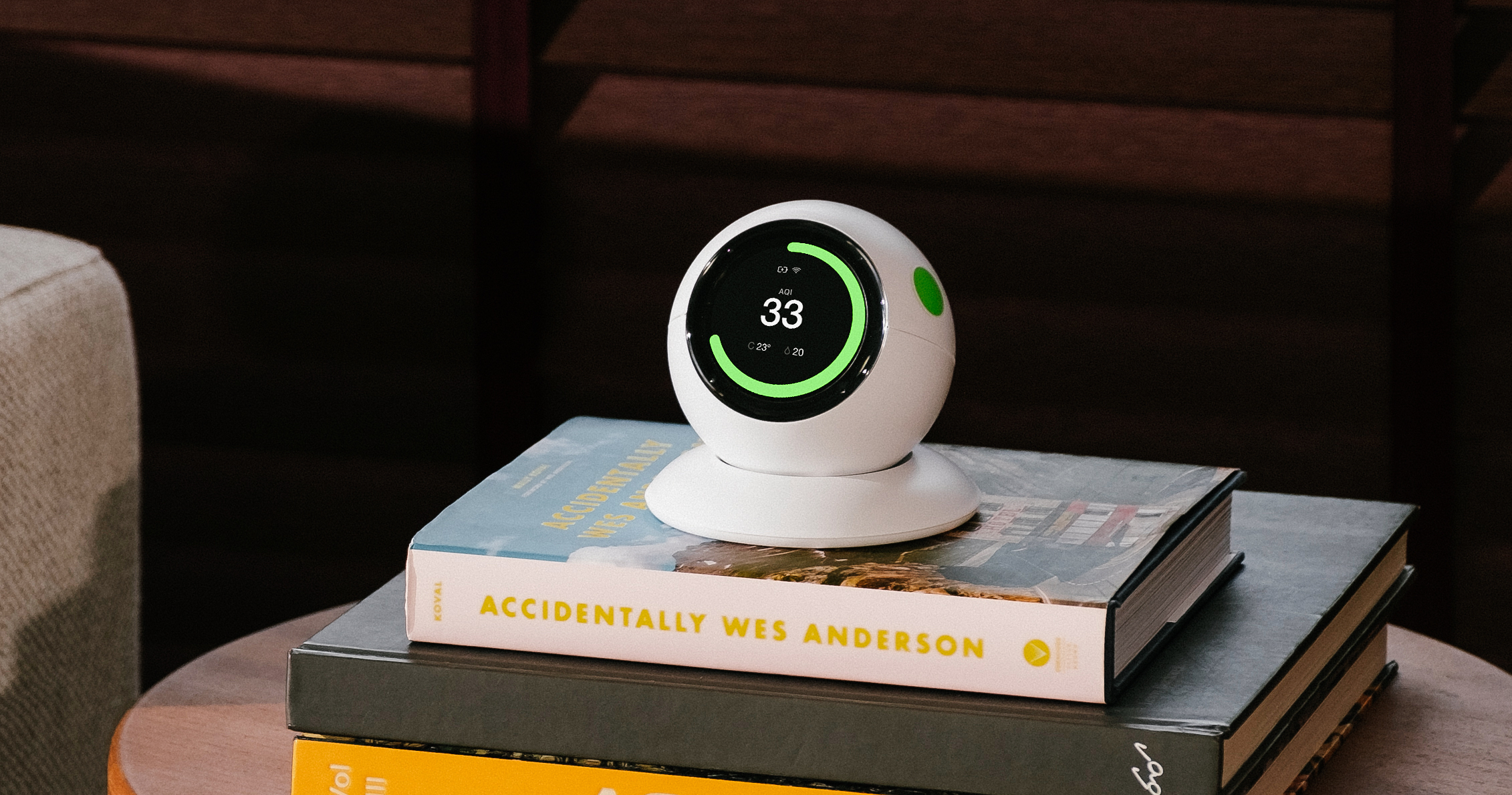What is the Virus Risk Index and how does it work?
COVID-19 is Airborne
For over a year, the COVID19 virus has turned our world upside down, and many of us were forced to adjust our lifestyle significantly - we spend a lot more time in our homes with our families.
The world’s scientific community has confirmed that COVID19 is airborne and transmission primarily occurs through the air1. This is why indoor air quality during pandemic times is important.
The Role of Air Quality in Survival of COVID-19 Indoors
As with all viruses, environmental factors play a very critical role in the potential transmission of a virus as they impact how long it can survive and how far it can travel. In situations where an infected person is indoors, keeping the environmental conditions within safe ranges help reduce the risk of transmission.

The good news is that unlike outdoors, we can have full control of our indoor environment and can make the necessary adjustments to create ideal conditions and reduce chances of transmission in the event that the virus is present inside.
Introducing The Virus Risk Index
To help you take control of your indoor environment, the team at Nafas has upgraded the AirTest home air quality monitor to include a new feature called the Virus Risk Index.

Each AirTest home air quality monitor measures temperature, humidity and PM2.5, which all have been connected to the increased risk of airborne virus transmission.
Using this information, you can make sure that the indoor climate inside your home is maintained at ideal levels as recommended by published scientific research.
We have simplified this science for you to create an easy to follow scale:
- LOW - the risk of virus transmission is low as virus survival is low.
- MEDIUM - the risk of virus transmission is medium as viruses can survive in these conditions
- HIGH - the risk of virus transmission is high as viruses can survive and spread in these conditions.

Every AirTest now automatically has this feature included, and can be accessed in just a few easy steps:
- Connect your AirTest to the nafas app
- Open your AirTest from the “My Devices” page
- Click on the “Virus Risk Index” page to learn more about your current conditions
How is the Virus Risk Index Calculated?
The Virus Risk Index is designed to help you create the ideal environment for your indoor spaces to reduce the potential risk of virus transmission. Our scientific research suggests that you should:

Temperature - Keep Your Indoor Temperature Above 19℃
- The ideal temperature indoors is between 19℃ and 24℃, this not only provides a good environment for our personal comfort, but limits the transmission of viruses
- Research has proven that as temperature increases, the life of a virus decreases accordingly2.
- Note: The primary form of COVID19 transmission is through the air, as their concentrations can be much higher than on surfaces we touch. You would literally have to lick tables and handrails to receive a higher dose of the virus.
Humidity - Keep Your Humidity Between 40 and 60%
- The ideal humidity indoors is between 40 and 60%, for your personal comfort, but also to protect against virus transmission3.
- According to published reports, the ideal humidity for inactivation of viruses is 50%4.
- Research has proven that higher humidity causes droplets to fall out of the air, reducing the chances of airborne virus transmission. At lower humidities, the droplets become very light and can travel farther distances.
- Note: At humidity above 80%, transmission rates become lower as well
Particulate Matter 2.5 - Keep Your Indoor PM2.5 Level Below 25 µg/m3
- In a study published in April 2020, scientists confirmed that higher PM2.5 levels corresponded to higher transmission rates of virus5.
- PM2.5 particles can allow virus droplets (which are smaller) to attach themselves and travel longer distances
- According to the WHO, keeping PM2.5 level indoors under 25 µg/m3 (Interim Target 2), is good for general respiratory health
- Research shows that HEPA filters reduce aerosol concentration in an indoor environment6 by 90% in 30 minutes, and can reduce the level of virus aerosol particles by a factor of 6.
Each one of your AirTests has already been equipped with the new software, simply connect your AirTest to the nafas app to access the feature.

Living in a new normal environment requires new safety guidelines which we have help created in the form of the Virus Risk Index. To ensure ethical and scientific integrity we have included the various literature which we have used to corroborate our claims at the bottom of this post.
✅ To learn more about how to improve your indoor air quality and keep the virus risk index low, click here.
References
- Morawska et al. 2020 “Airborne transmission of SARS-CoV-2: The world should face the reality“ https://www.sciencedirect.com/science/article/pii/S016041202031254X
- Casanova et al. 2010 “Effects of Air Temperature and Relative Humidity on Coronavirus Survival on Surfaces” https://aem.asm.org/content/76/9/2712
- Ahlawat et al. 2020 “An Overview on the Role of Relative Humidity in Airborne Transmission of SARS-CoV-2 in Indoor Environments“ https://aaqr.org/articles/aaqr-20-06-covid-0302
- Spena et al. 2020 “On the Optimal Indoor Air Conditions for SARS-CoV-2 Inactivation. An Enthalpy-Based Approach“ https://pubmed.ncbi.nlm.nih.gov/32825607/
- Setti et al. 2020 “Airborne Transmission Route of COVID-19: Why 2 Meters/6 Feet of Inter-Personal Distance Could Not Be Enough “https://www.mdpi.com/1660-4601/17/8/2932/htm
- Curtius et al. 2020 “Testing mobile air purifiers in a school classroom: Reducing the airborne transmission risk for SARS-CoV-2” https://www.medrxiv.org/content/10.1101/2020.10.02.20205633v3
